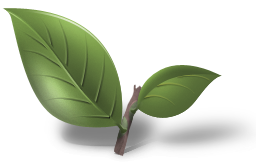Now that you have both father and son, can you tell if they are using the same clay? Are there differences in pouring and wall thickness?
Ode to the Kyusu
Congratulations Pan. May I highly recommend you use padded fabric under your teaware, to prevent breakage. Don’t want to see these new kyusu going down the road a few of your other pieces have goneL.S.G.artapprentice wrote: ↑Tue Apr 06, 2021 4:47 pmSo proud to finally own a Hokujo Kyushu. Hope to buy a Yamakashi(sp?) one when it comes available I missed out last time. Last one is of father and son
@LeoFox
Im not sure as the Hokujo uses Nanban clay which I presume is diffrent than the yakashimi clay he uses, I have not tried out either yet as I am more so admiring their beauty but I most likley may use the Nanban one for roasted ball rolled oolong teas. The Hokujo Shibordashi I have does use the same clay as the Kohokujo kyusu so I assume astringency is limited.
@Victoria oh belive me as we speak Im looking at some better storage space as well. In fact Im thinking of a foam padded metal security case, I was lucky to save my Yamada Sou but not my previous Fugetsu.
Im not sure as the Hokujo uses Nanban clay which I presume is diffrent than the yakashimi clay he uses, I have not tried out either yet as I am more so admiring their beauty but I most likley may use the Nanban one for roasted ball rolled oolong teas. The Hokujo Shibordashi I have does use the same clay as the Kohokujo kyusu so I assume astringency is limited.
@Victoria oh belive me as we speak Im looking at some better storage space as well. In fact Im thinking of a foam padded metal security case, I was lucky to save my Yamada Sou but not my previous Fugetsu.
Hokujo Nanban kyusu use the same stoneware clay that he uses in other kyusu, except kaolin and other mineral chips are mixed in. With Hokujo I’ve read that ‘Nanban’ means the outside of the body is almost not touched while forming on the wheel, although on mine I can see ridges formed by a tool. Nanban just means barbaric rough surface.L.S.G.artapprentice wrote: ↑Tue Apr 06, 2021 6:42 pmLeoFox
Im not sure as the Hokujo uses Nanban clay which I presume is diffrent than the yakashimi clay he uses, I have not tried out either yet as I am more so admiring their beauty but I most likley may use the Nanban one for roasted ball rolled oolong teas. The Hokujo Shibordashi I have does use the same clay as the Kohokujo kyusu so I assume astringency is limited.
welll there we goVictoria wrote: ↑Tue Apr 06, 2021 7:43 pm
Hokujo Nanban kyusu use the same stoneware clay that he uses in other kyusu, except kaolin and other mineral chips are mixed in. With Hokujo I’ve read that ‘Nanban’ means the outside of the body is almost not touched while forming on the wheel, although on mine I can see ridges formed by a tool. Nanban just means barbaric rough surface.
To help with morning sencha duties while my Petr-yaki is awaiting a reply from a Kintsugi artist, I found a lovely Shouryu pot with a glaze style I'd long been wishing for, and then I started searching for other Shouryu pieces, and found a left-handed version in a size very similar to my Petr-yaki.
And much to my surprise, a left-handed Gisui kyusu was right there also at Tokoname.jp's eBay store. It followed the Shouryu home, and this morning found use with Kabuse sencha from Obubu. Enjoying the sencha this morning in a Bill Perrine/Splitfire Pottery cup.
And much to my surprise, a left-handed Gisui kyusu was right there also at Tokoname.jp's eBay store. It followed the Shouryu home, and this morning found use with Kabuse sencha from Obubu. Enjoying the sencha this morning in a Bill Perrine/Splitfire Pottery cup.
- Attachments
-
- 08CF5EDC-F659-4380-B443-0786A0093D16.jpeg (114.57 KiB) Viewed 10850 times
-
- D09F18F4-4290-4347-8323-EF019A45AC92.jpeg (122.29 KiB) Viewed 10850 times
Beautiful pot. Is it just the lighting that makes it seem light brown, or is that its actual color?
I wish could say that seeing your pictures activated my latent case of TAD. But no, I already am in full Gisui-TAD mode, nothing latent there. I cannot really explain why, but there is something about his shudei pots that really connects with me.
